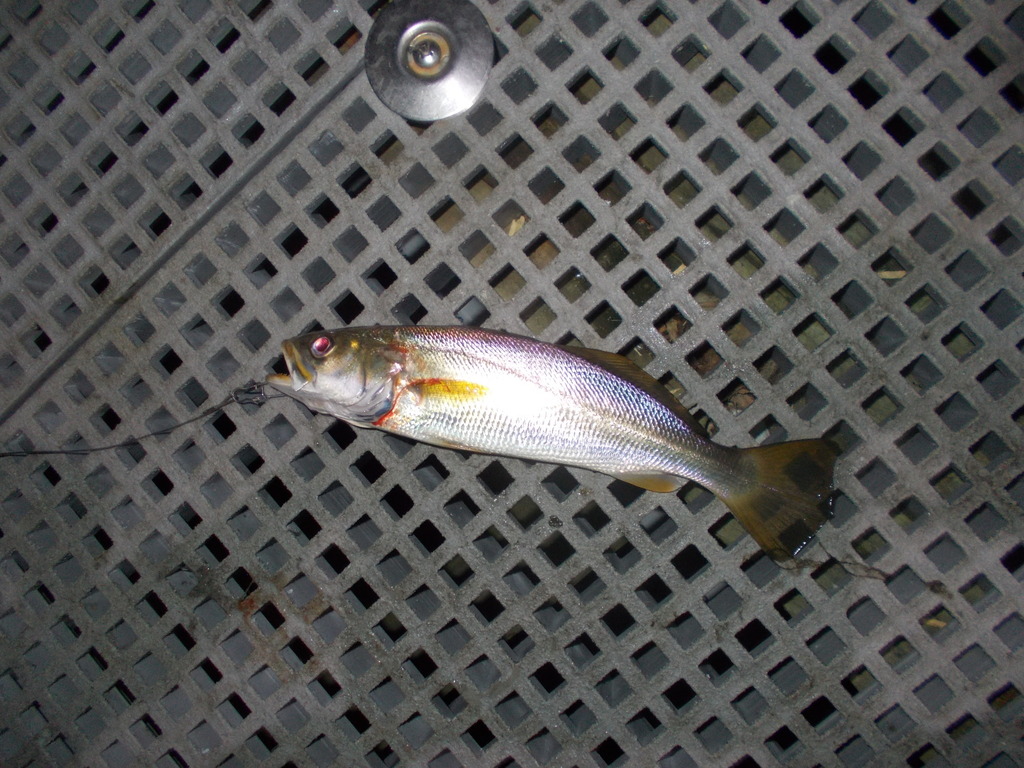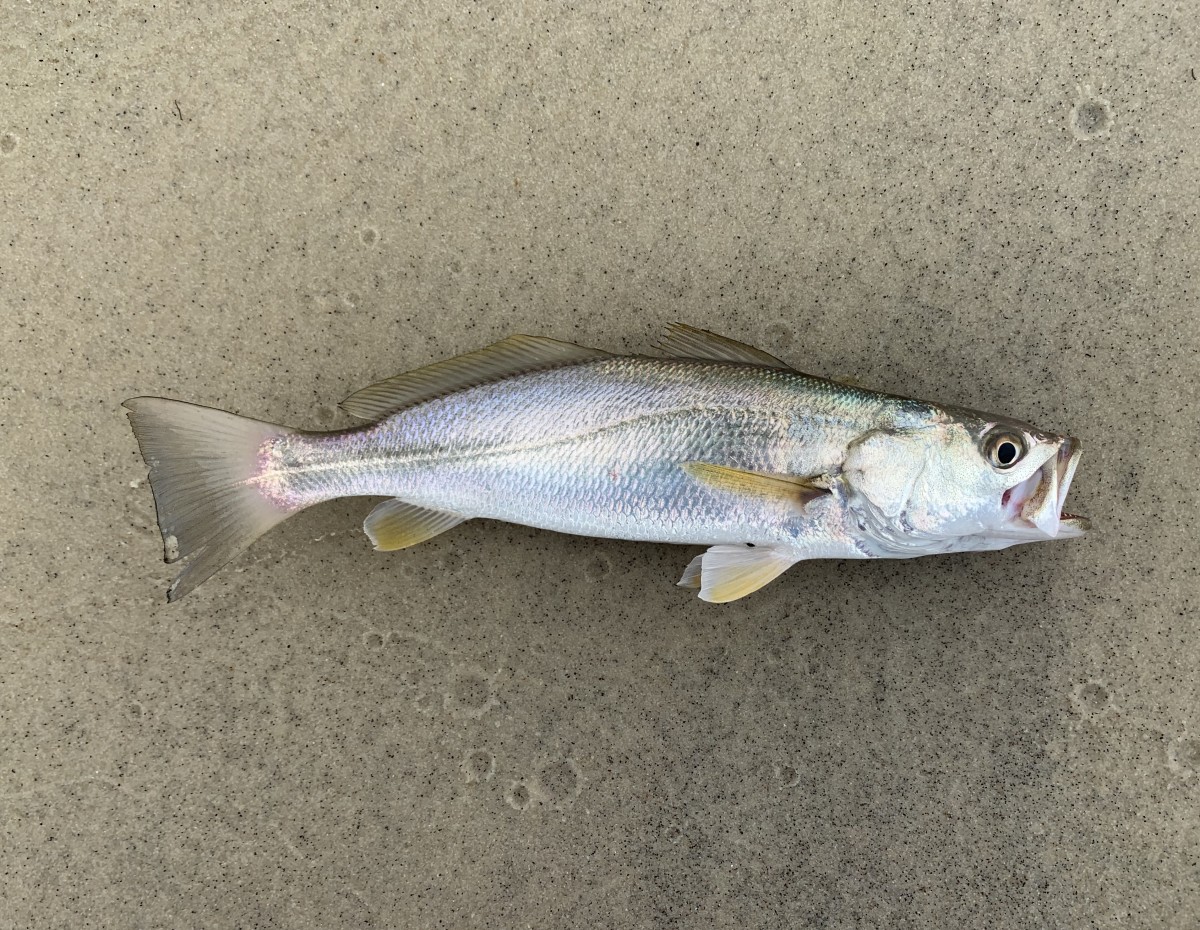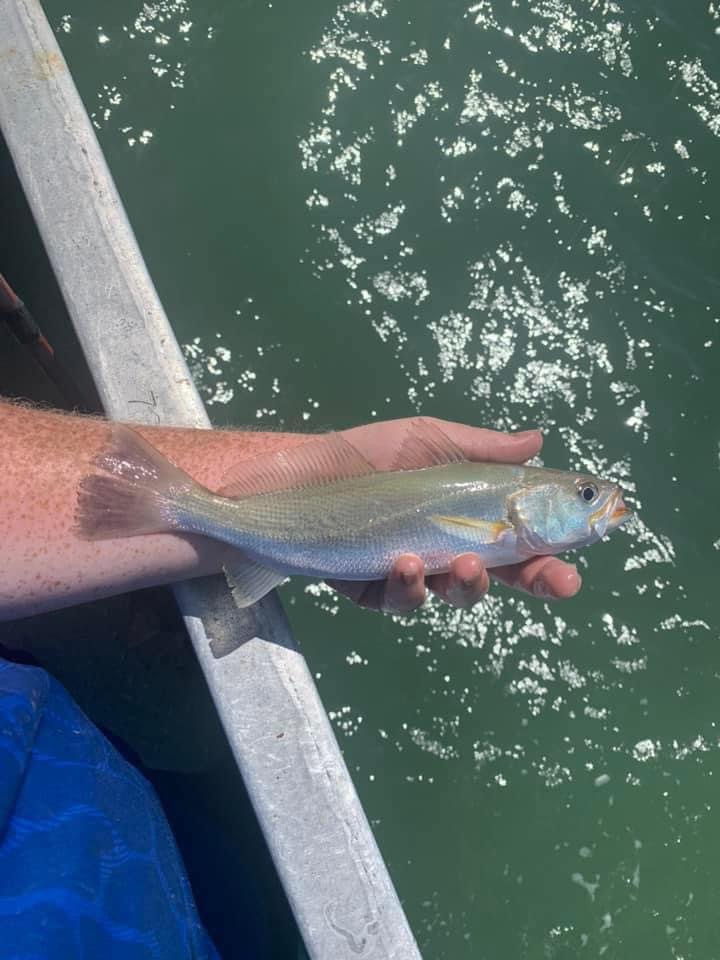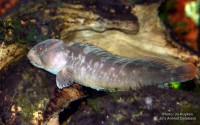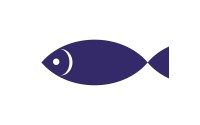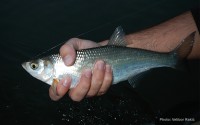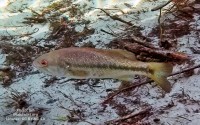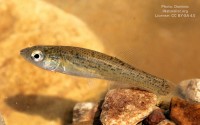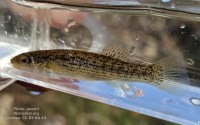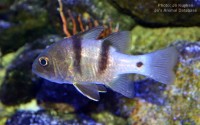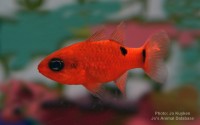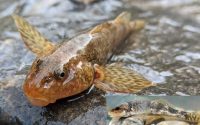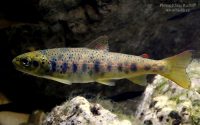Sand weakfish
(Cynoscion arenarius)
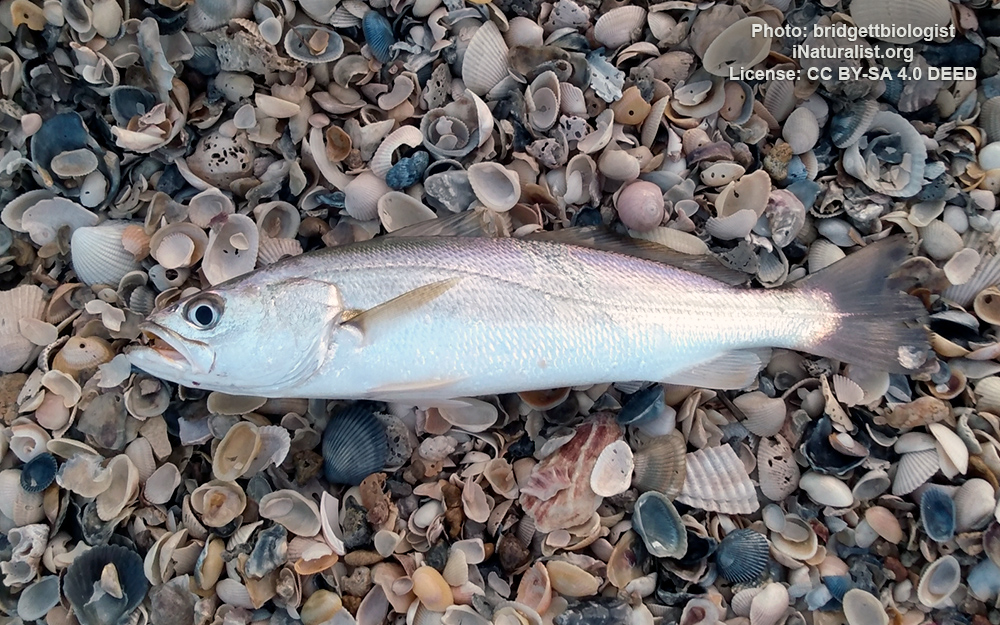
Image source: bridgettbiologist | inaturalist.org
Classification
General data
Cynoscion arenarius has a body that is elongated and compressed. The upper body is silvery gray foding to silvery in the lower body. The anal and pelvic fins are pale to yellowish and the caudal and the soft-rayed part of the dorsal fin have indistinct spots. The axil of the pectoral fins and the inside of the operculum is dark.
The teeth are arranged in many rows with 2 large canines at the front of the upper jaw; while the lower jaw has row of widely spaced larger teeth which grow in size towards the back of the mouth.
There are no barbels or pores on the chin but there are 2 marginal pores on the snout.
The dorsal fin is incised and there are 9 or 10 spines in the part before the incision and a single spine and between 25 and 29 soft rays to its rear. The anal fin has 2 spines and 9 or 10 spines.
This fish has a maximum published total length of 63.5 cm (25 in), although 35 cm (14 in) is more typical, and a maximum published weight of 2.8 kg (6.2 lb).
Cynoscion arenariusis found in the western Atlantic Ocean where it occurs from Florida into the Gulf of Mexico as far south as the Bay of Campeche in Mexico.
This is a demersal fish occurring in shallow coastal waters, including in the surf zone and in estuaries, where there is a sandy substrate at depths down as far as 177 m (581 ft).
